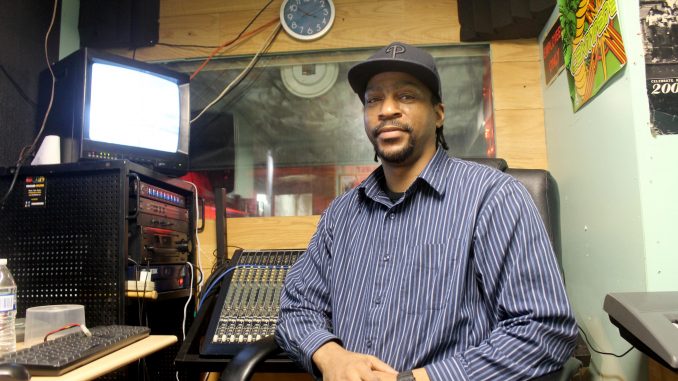
When Jonathan Olshefski began riding along with Christopher “Quest” Rainey on his newspaper delivery routes, he was impressed by the “artistry” of Rainey’s behind-the-back, over-the-shoulder throws that came so naturally.
The Pittsburgh native quickly became enthralled by Quest’s investment in his work, family and the North Philadelphia community. At the time, Olshefski didn’t realize he would spend ten years documenting the “quiet moments” of the Rainey family, who live at 23rd and Norris streets.
There is Quest, who delivered newspapers for a living at the time of their introduction but also had a music studio, which acted as a safe space for the youth in the community. There is Christine’a Rainey, who most call “Ma Quest,” and there is PJ, the 16-year-old daughter who has a love for basketball.
Olshefski, a 2004 English and film and media arts alumnus, is the creator of the film “Quest: The Fury and the Sound,” which encapsulates not only the barbecues, marriages and block parties of the North Philadelphia family, but also the difficult moments and their ability to stay strong during struggles. The film was awarded a $100,000 grant from the MacArthur Foundation in February.
After graduating, Olshefski did not actively pursue filmmaking. He was working construction and would do creative work, like photography, on the side.
In 2005, Olshefski met Quest’s brother, James, while working on the website for New Jerusalem Now, an addiction recovery program headquartered on Norris Street near 25th.
“I was connecting in this amazing way and doing art and also telling stories collaboratively and it just felt right,” said Olshefski, who began teaching photography to the residents of the program shortly after.
James offered to take Olshefski to see his 47-year-old brother’s basement recording space, Everquest Recordings. Olshefski was impressed by the “hub of community,” not only in the studio, but the household itself.
There were so many people and moments that caught Olshefski’s attention, he said.
“There is this guy with few resources just creating a space for people to express themselves, and they are responding and showing up,” Olshefski said. “It was just really interesting and exciting to see that.”
During the last 10 years, Quest Rainey and his family have lost several relatives and friends, in addition to dealing with his son William’s diagnosis with brain cancer and daughter PJ being hit by a stray bullet a block when a shooting occurred a block from their home. But he is content that these situations were captured in the film.
“I am kind of glad, because this is something where you can look back on and say, ‘Look at all the ups and downs of these people and look how resilient they are,’” Quest Rainey said. “No one would believe that we went through all of that in such a short time and still remained with a smile on our faces.”
When PJ was shot in 2013, the family wasn’t sure if she’d be comfortable sharing her story on-camera, but the junior at Constitution High School said she wanted the film to showcase how the shooting changed her life.
“I thought people should know it really affected my life in good ways and bad ways,” PJ Rainey said.
Though Olshefski and Quest’s friendship began in 2006, Olshefski didn’t start the film until a few years later. He found inspiration in how Quest’s life was a parallel to his own reality, he said.
Olshefski decided to return to Temple for a master’s in film, which he finished in 2010. For his first project, he recorded a short documentary about Quest’s music studio on 16 millimeter film. After the project, Olshefski said he felt he wasn’t fully capturing the essence of the Raineys.
“I felt like I was just scratching the surface of what this was and I needed to keep digging and keep trying to gather material to tell a story that reflects the experience,” Olshefski said.
Throughout graduate school, he continued his ongoing relationship with the Raineys, staying over for days at a time to “fully embed” himself into the project.
Olshefski found that telling the story of the Rainey family may be even more important after reading Robert Huber’s article “Being White in Philly,” which was Philadelphia Magazine’s cover story in 2013.
“I read it and I was like, ‘This is why I need to make this film because there is so much misinformation and people have really hardened perspectives on what North Philly is,’” Olshefski said. “[The North Philadelphia community’s] point of view gets buried and ignored, so I felt like it was really important to share that perspective and amplify their voices.”
Olshefski said he will be using the MacArthur grant and others for the editing process, for which he now has a small team of experienced documentary filmmakers. He hopes to release the film in 2017.
“The goal is to not just have a film that exists as a standalone film, entertainment and then you move on with your life,” he said. “I want the film to be a catalyst for something more to inspire that longtime commitment to communities like North Philadelphia.”
Emily Scott can be reached at emily.ivy.scott@temple.edu.


Be the first to comment